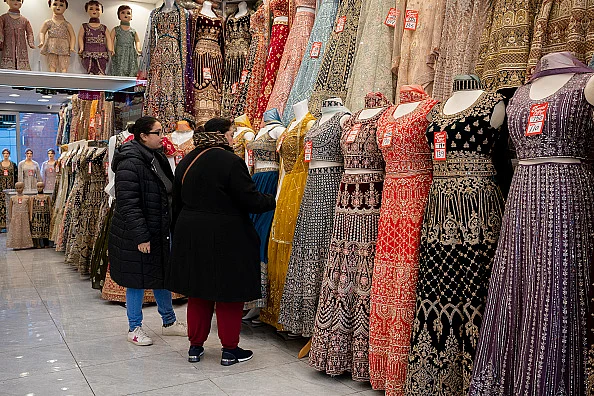Mannequins of all shape, size, age and gender inundate clothing stores, whether in malls or in old city bazaars across the country. Recently, a designer friend of mine went shopping for mannequins where amongst a sea of dolls in this veritable warehouse sat the sole breathing person, the shopkeeper and manufacturer of these mannequins, some of which would soon be dressed in my friend’s clothes. “Mannequin” in the original French refers merely to a model and in the world of couture, a living fashion model. Designers have been known to have their favourite mannequins, those beings and bodies that bring forth to the world their singularly signature style.
What happens when mannequins, however, are replaced with inanimate dolls that line up clothing store fronts? How many of us whilst shopping have not paused for a brief moment in a clothing store, thinking that the doll fully and fashionably clad standing in front us were not a real living person? Not only are we as human beings dressed in clothes, but a significant population of tailors’ dummies dressed in contemporary couture populate our cities.
Why is it that we choose to dress these inanimate dolls in the same garb as we would like to dress our animate selves? Is it because we have fashioned them according to the tailored proportions of our own bodies, or is it that only in the figure of the mannequin—a pure body without life— that we are able to articulate the cosmetic appeal of fashion? In the embodiment of a doll, we can dress or undress him/her without any moral trepidation, as if we were (mis) handling the dead.
Much has been written about the relationship between death and fashion, as far back as the 18th century Italian poet, Giacomo Leopardi, who penned a dialogue between fashion and death; the main drama ensues with Madame Fashion pursuing Madame Death by trying to convince her that she is her very own sister, that much like death, fashion is perpetually and perennially caught up in constantly renovating the world. It is my contention that some of fashion’s most salient and concentrated features surface on the metaphorical bodies of the dead, the mannequin serving as a purely cosmetic aesthetic of artifice, the brilliantly superficial.
It should, as a result, come as no surprise that real living models often engage in mechanical expressionless, death and doll-like motions on runways; these living models suppress their own human animation by bringing the semiotic of artifice, the semiotic of the mannequin and of death to the fore.
Recently, in some news circles there has been an outcry pitted against the ostentatiousness of the Met Gala, contending that how can we be parading ourselves as peacocks when many are losing their lives in Palestine. Fashion has always been able to reach out its deathly cold hand in moments of crises; when many were dying of consumption in earlier centuries, there was simultaneously a ‘tubercular look’ that came into fashion. Perhaps, fashion is by nature excessive, indulgent, decadent, and destructive, but moreover, cold and indifferent. She of-ten even responds to disease and calamity by embroidering sickness, war and epidemic into the fabric of her newest clothes and collections. The fashion industry is also one of the most destructive in terms of damaging the environment whilst making the most money doing it. Perhaps, Madame Fashion knows what she is talking about when she says that she and her sister, Madame Death have similar objectives. Fashion, is none other than a death cult.
My friend just called to let me know that all the new mannequins she purchased at the warehouse are dressed up and ready to be exhibited in the store; she even went on to say that the one red-head particularly fit so well in the only sweater of her new winter capsule collection, his red hair matching the colour of the sweater. She also spoke of the featurelessness of another mannequin’s face and how that so successfully assisted in diverting the viewer’s gaze directly to the bright neon green shirt that adorns his torso.
Gaurav Monga is a writer and teacher

















